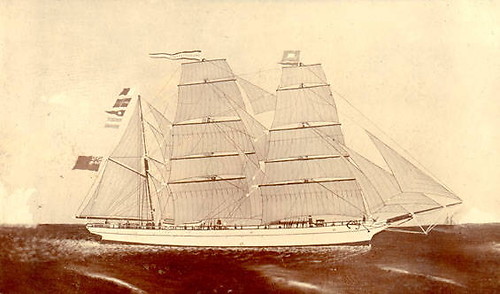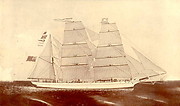 Hartlepool Sports & Leisure
Hartlepool Sports & Leisure
- Cinemas, Theatres & Dance Halls
- Musicians & Bands
- At the Seaside
- Parks & Gardens
- Caravans & Camping
- Sport
 Hartlepool Transport
Hartlepool Transport
- Airfields & Aircraft
- Railways
- Buses & Commercial Vehicles
- Cars & Motorbikes
- The Ferry
- Horse drawn vehicles
 A Potted History Of Hartlepool
A Potted History Of Hartlepool
- Unidentified images
- Sources of information
- Archaeology & Ancient History
- Local Government
- Printed Notices & Papers
- Aerial Photographs
- Events, Visitors & VIPs
 Hartlepool Trade & Industry
Hartlepool Trade & Industry
- Trade Fairs
- Local businesses
- Iron & Steel
- Shops & Shopping
- Fishing industry
- Farming & Rural Landscape
- Pubs, Clubs & Hotels
 Hartlepool Health & Education
Hartlepool Health & Education
- Schools & Colleges
- Hospitals & Workhouses
- Public Health & Utilities
- Ambulance Service
- Police Services
- Fire Services
 Hartlepool People
Hartlepool People
 Hartlepool Places
Hartlepool Places
 Hartlepool at War
Hartlepool at War
 Hartlepool Ships & Shipping
Hartlepool Ships & Shipping

Charlotte Young

Names and owners
Year |
Name |
Owner |
|
|---|---|---|---|
| 1867 | Charlotte Young | W. Young | |
| 1884 | Charlotte Young | R. & W. King | |
| 1890 | Charlotte Young | African Association | |
| 1899 | Charlotte Young | William Anderson |
Fate
The fate of this vessel is not yet known. Her British Register was closed in 1910 so she was probably broken up.
Related items :
 Charlotte Young
Charlotte Young
 Donated by Mr. Bert Spaldin
Donated by Mr. Bert SpaldinAn unsourced image of the sailing vessel Charlotte Young.
More detail » Charlotte Young - a general history
Charlotte Young - a general history
Official No. 54572; Code Letters HRFJ.
Owners: William Young, West Hartlepool; 1884 R & W King, Bristol; 1890 African Association Ltd, Liverpool; 1899 William Anderson, Liverpool; 1902 (bought for £1,000) Job Bros, Liverpool.
Masters: 1867-70 Le Blancq; 1870 William Sawtell; 1874 Le Blancq; 1875 Picot; January 1877-83 John Richard Crooks (b.1847 Staithes C.N. 89741 Sunderland 1873); 1884-91 Luke S Berryman (b. 1856 Penzance C.N. 05790 Plymouth 1883); 1891 Petherbridge; 1891-94 T Berryman; 1894 Petherbridge; 1895-96 T Berryman; 1897-1900 J Ratcliffe; 1900-01 J Little; 1902-1907 Robert Lawrence Palfrey; 1907 D Sinclair: 1907-09 Halfyard.
Miscellaneous: 17 December 1880 bound for Boston with a cargo of china clay she grounded on the bar at Hayle while on tow; 8 October 1899 Charlotte Young got into difficulty while trying to get into Harbour Grace, Newfoundland. The steam tug DP Ingraham took the barque in tow but the rope parted when six miles NW of the Cape. There was a heavy sea & the barque was heading towards rocks. Blue lights & rockets were fired but the tug did not return. The crew eventually managed to get the barque to Cape Spear when the tug Favourite took her in tow but again the rope parted & the tug’s master refused further assistance. A storm came up from the north & the cargo of oil in the hold began to come loose. The crew knew that if the cargo moved to the lee side the vessel would capsize so they used the spare sails. The wind moderated & the barque reached Cape Broyle about 36 hours after it first came into difficulty. The master, whose wife was also on board, criticised the conduct of the masters of the tugs.
Bound from Pernambuco in sand ballast she ran into hurricane force winds off the coast of Newfoundland in October 1909. The swift currents pulled the barque towards the rocks in St Mary’s Bay & the crew worked all night to keep her from going ashore. They dropped anchors off Colinet Island where she lay for a day but the wind & force of the sea increased & she began to drag her anchors. The crew let go both anchors & 150 fathoms of chain & ran for safe port. The barque lost her fore-top gallant mast but was otherwise undamaged.
Voyages: 5 July 1871 arrived Liverpool from Adelaide; 25 May 1881 arrived Hayle from Boston; May 1883 arrived New York with a cargo of arsenic & china clay; 6 February 1885 arrived Falmouth from Havre; 29 March 1888 arrived Falmouth from the Cameroons; 23 March 1892 arrived Liverpool from Nieuwe Waterweg, Netherlands; May 1895 bound from Old Calabar for Rotterdam; November 1896 bound from Old Calabar for Rotterdam.
British Register was closed in 1910.
Crew December 1870:
Cook, James, cook, 26
Cowan, John, boy, 16, Belfast
Hilgoran, Julian, able seaman, 25, Christown
Jackson, William, 1st mate, 24, Robin Hood’s Bay
Messory, George, able seaman, 48, Jersey
Schliebeckes, R, able seaman, 20, Prussia
Sawtell, William, master
Sinrod, NP, able seaman, 27, Norway
Williams, Mason, cook/steward, 19, Somalia
More detail »



